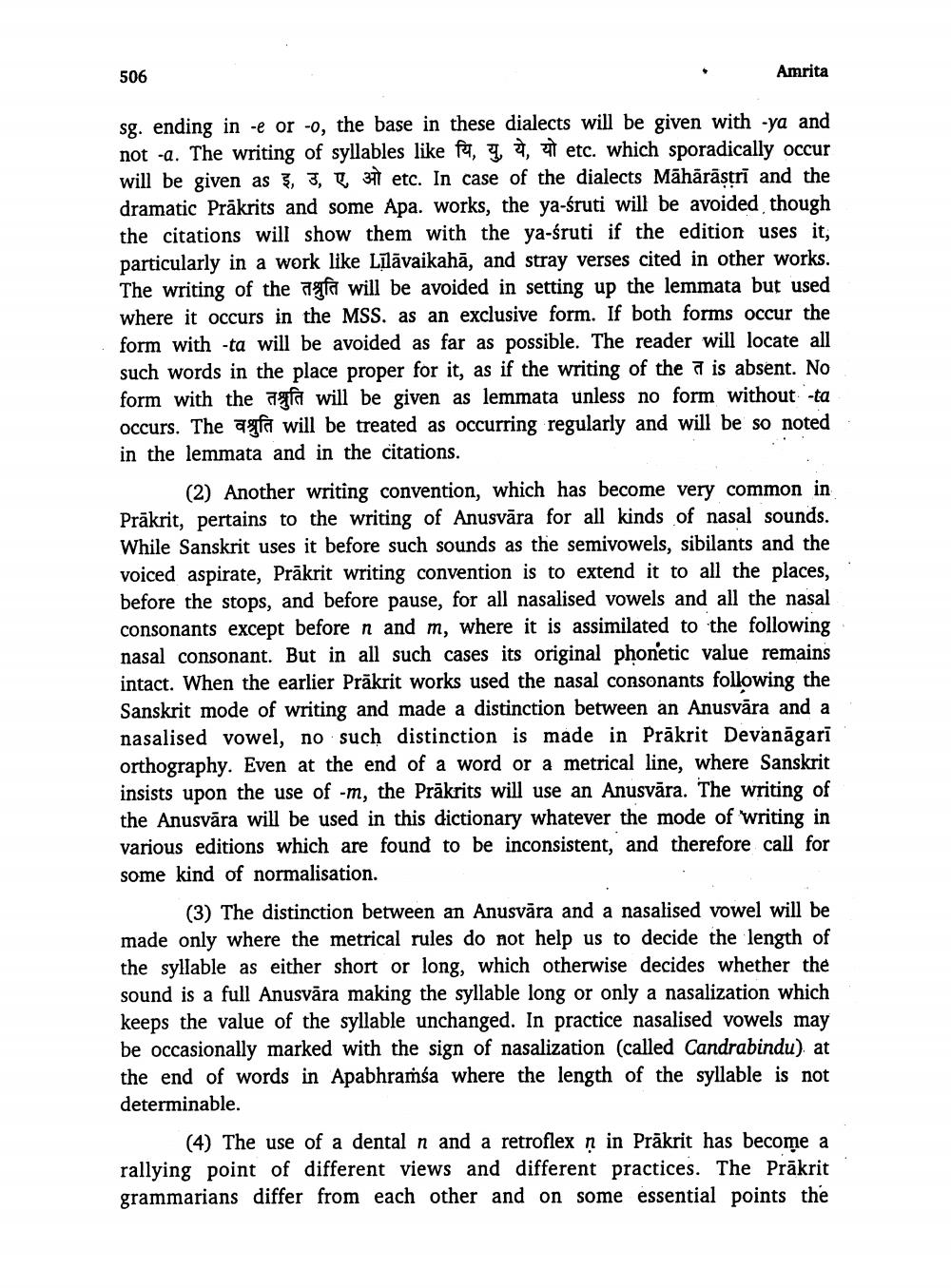________________
506
Amrita
sg. ending in -e or -0, the base in these dialects will be given with ya and not -a. The writing of syllables like , I , etc. which sporadically occur will be given as 3, 3, 1, 371 etc. In case of the dialects Māhārāstri and the dramatic Präkrits and some Apa. works, the ya-śruti will be avoided though the citations will show them with the ya-śruti if the edition uses it, particularly in a work like Līlāvaikahā, and stray verses cited in other works. The writing of the agfa will be avoided in setting up the lemmata but used where it occurs in the MSS. as an exclusive form. If both forms occur the form with -ta will be avoided as far as possible. The reader will locate all such words in the place proper for it, as if the writing of the 7 is absent. No form with the agfa will be given as lemmata unless no form without -ta occurs. The asta will be treated as occurring regularly and will be so noted in the lemmata and in the citations.
(2) Another writing convention, which has become very common in Prākrit, pertains to the writing of Anusvāra for all kinds of nasal sounds. While Sanskrit uses it before such sounds as the semivowels, sibilants and the voiced aspirate, Prākrit writing convention is to extend it to all the places, before the stops, and before pause, for all nasalised vowels and all the nasal consonants except before n and m, where it is assimilated to the following nasal consonant. But in all such cases its original phonetic value remains intact. When the earlier Präkrit works used the nasal consonants following the Sanskrit mode of writing and made a distinction between an Anusvāra and a nasalised vowel, no such distinction is made in Prākrit Devanagari orthography. Even at the end of a word or a metrical line, where Sanskrit insists upon the use of -m, the Prākrits will use an Anusvāra. The writing of the Anusvāra will be used in this dictionary whatever the mode of writing in various editions which are found to be inconsistent, and therefore call for some kind of normalisation.
(3) The distinction between an Anusvāra and a nasalised vowel will be made only where the metrical rules do not help us to decide the length of the syllable as either short or long, which otherwise decides whether the sound is a full Anusvāra making the syllable long or only a nasalization which keeps the value of the syllable unchanged. In practice nasalised vowels may be occasionally marked with the sign of nasalization (called Candrabindu) at the end of words in Apabhramsa where the length of the syllable is not determinable.
(4) The use of a dental n and a retroflex n in Prākrit has become a rallying point of different views and different practices. The Prākrit grammarians differ from each other and on some essential points the




